Propagating a Plant Is Easier Than You Think—Here's How to Do it Yourself
Propagating your plants is a lot easier than it seems, even if you're new to this whole green thumb thing. But let's back up a sec—if you're reading this wondering, "What does propagation even mean?!" here's what you need to know: Plant propagation is a way of forming a new plant from an existing plant. Essentially, you take a piece of a bigger plant and start growing another one from it. You might do this because your plant requires regular pruning and you don't want the cuttings to go to waste, or to create a sweet gift from an existing plant (hello, housewarming!).
There are a few different methods of propagating plants from cuttings, but we went with the water method at the recommendation of Joyce Mast, Bloomscape's resident Plant Mom (yes, that is her real title!). If you're ready to try it out with one of your plants, here's what to do.
You'll Need:
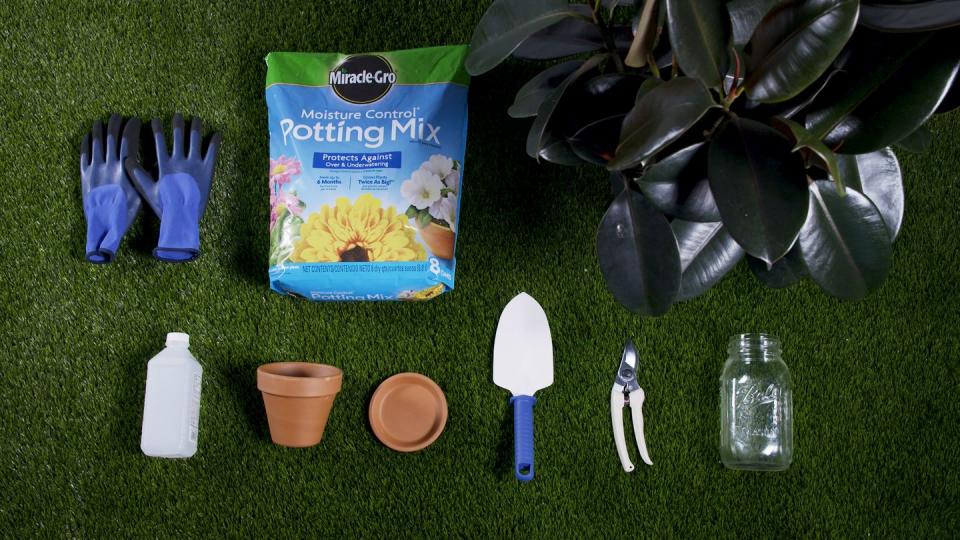
Your plant*
Gloves
Glass jar
Shears
Rubbing alcohol
Trowel
Potting soil
Planter
*We used a rubber tree (AKA the Ficus elastica) for this tutorial, but there are tons of plants out there that can be propagated in water. If you're unsure if your plant can be propagated in water, check with your local garden center!
How to Propagate a Plant in Water:
Choose where you'd like to make your cutting, and find the note on the plant's stem. According to Mast, the node is the small, raised bump that can be found on the opposite side of the stem thanthe leaf. You'll find that the nodes are more obvious on vining plants like a pothos or a monstera, and less so on woody plants like the rubber tree we used here. In that case, she says "you can cut the stem anywhere, so long as you include about one to three leaves per cutting."

2. Sterilize your shears with rubbing alcohol—this helps keep your plant healthy!
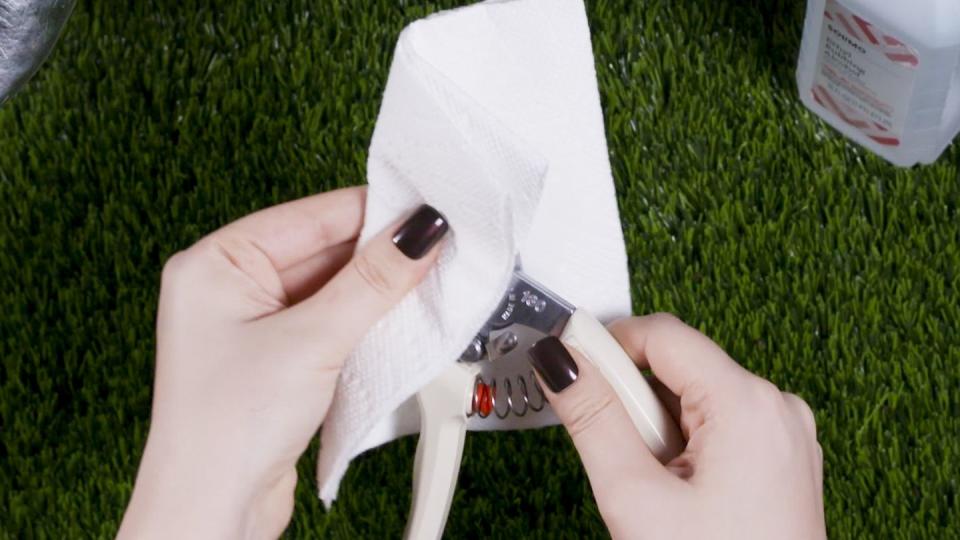
3. Put on your gardening gloves (this is especially important with plants that have sap, as some—like the kind from a rubber tree—can irritate your skin), and cut the plant's stem below the node.
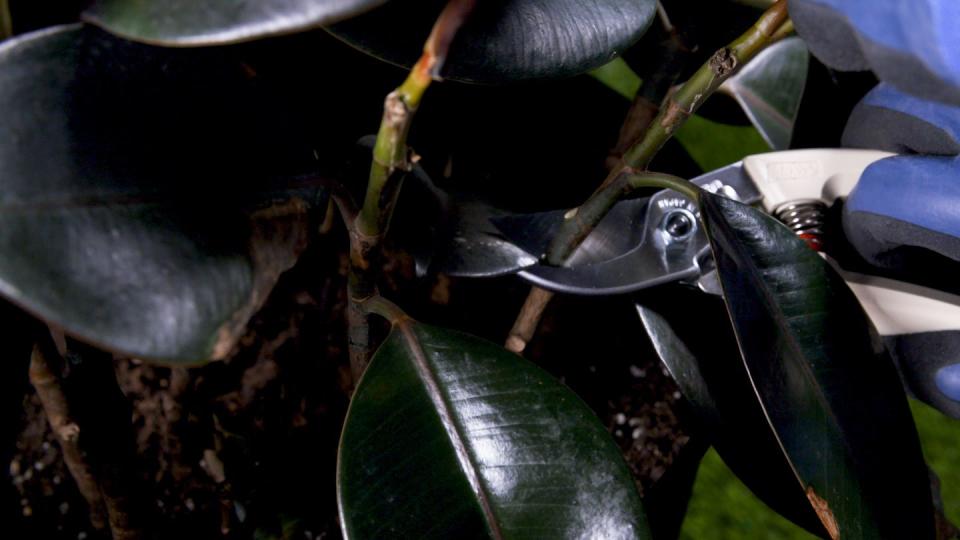
4. Place your new cutting in a jar of glass jar full of water, and put it in a warm, bright and location where it can soak up some indirect sunlight. Keep it there until it grows roots that are between one and three inches long. Depending on the plant, this can take anywhere from a few weeks to several months. Pro tip: Mast says you can dip the cutting in a rooting hormone before you put it in water, or just add the rooting hormone to the water to speed up the process. This is totally optional.
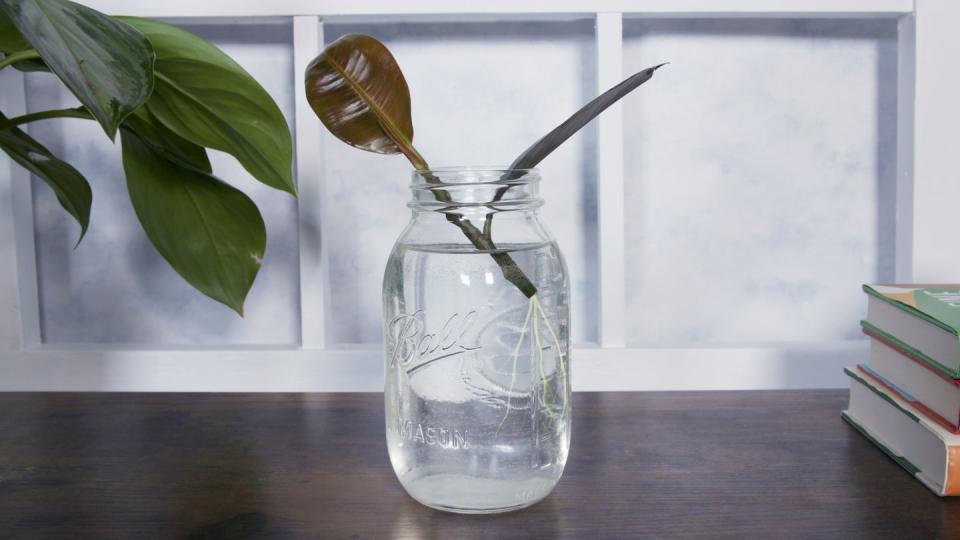
5. When your cutting has rooted, remove it from the water and plant it in a small planter with fresh soil. Water well. (And if you need help potting your cutting, this tutorial can help!)

Once your successfully propagated plant is in its new pot, all that's left to do is to keep watering it regularly and watch it grow.
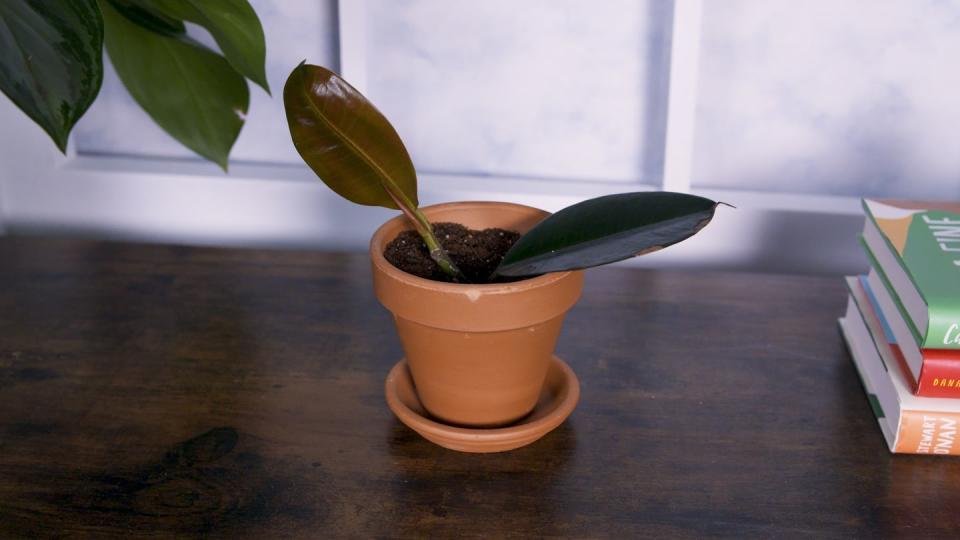
Follow House Beautiful on Instagram.
You Might Also Like

 Yahoo News
Yahoo News 
